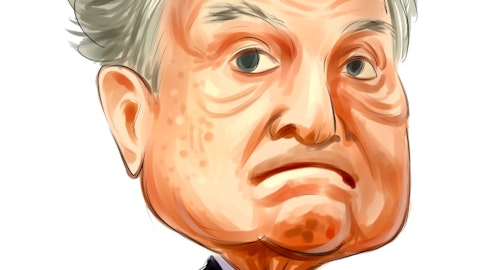Bobby Lavan: Yes. So we only took retail. So remember, retail is a smaller portion of the business in December. But the reason we took it was we wanted to test the consumer a little bit and see how much pushback there was and there was none. So ultimately, we’ve had a pricing consultant in-house for the past six months, and we’re really looking at pricing by hour, by day, by center, by products. And we saw some low-hanging fruit that we took in December that allowed us to test that change and whether the consumer react negatively to it. They didn’t. But now we’re pushing it into events. And so ultimately, we’re going to continue doing that. We have another round of pricing changes coming, and those are very exciting because we’re kind of coming to the end of this consultant engagement. There’s so much opportunity to be dynamic that the consumer will continue to just spend more and have better product in center.
Eric Wold: Got it. And then the comments around the maybe promotions kind of testing different things, seeing what works, expanding that, maybe cutting back on ones that didn’t work. Maybe talk about some of the something that hasn’t worked as you expected on kind of the midweek promotion to kind of promotional activity and kind of what you learned from the ones that didn’t work?
Thomas Shannon: Look, this is Tom. I’ll take the Mea Culpa. So we’ve had summer games, which had built up to about $6 million of revenue. Summer games was like a ski mountain season pass. And business was so strong back in fiscal ’23 that I decided to eliminate it in the summer of 2023 because I figure we could just get full price for those games. And while there was some offset, there wasn’t nearly enough offset to have made it worthwhile to kill that program. So as Lev mentioned, we’re going to bring that back. But that probably eliminating that probably cost us on order of $6 million of revenue last summer. So that was a pretty good example of something that didn’t work that we have learned. And we’re not going to bring it back exactly as it was before. We’re going to make it better. There’ll probably be a wider range of options for the consumer depending on what kind of experience they want. But that was entirely my decision, and it was a wrong decision.
Eric Wold: Okay.
Operator: Your next question comes from the line of Jeremy Hamblin from Craig-Hallum Capital Group. Your line is open.
Jeremy Hamblin: Thanks and congrats on the strong results. I wanted to just dial in a little bit more on the Lucky Strike integration and the acceleration of investment in that. In terms of thinking about outcomes and rationale, can you just get a little deeper into that in terms of getting the implementation done and the capital investment, is this more an opportunity you see driving revenue? You talked about some of the systems you’re bringing in that sounds like they are cost focused as well. But where do you see more of that opportunity here over the next 12 months?
Bobby Lavan: Yes. It’s going to be revenue and cost, right. So let’s talk about the revenue first. Fenway, which does $13-plus million of revenue at $16 million, we think we can put in another four to eight. So you can do the math on the magnitude of that. There’s always a way. That’s the kind of things we’re looking at and that we’re effectively accelerating. On the brand, I’ll let Lev kind of talk more about the brand.
Lev Ekster: Well, even on the revenue side, I want to point out, I’ve managed our amusements department for the last few years. A lot of those locations haven’t seen investment into the games in a number of years. We’re addressing that. There are some locations that had no arcades. We’re addressing that. And in terms of the brand, I personally lived in Miami, we have Lucky Strike Miami opening. I visit that center. I see the inbound interest. People are reaching out before we’ve even opened for events and buyouts. We do open calls for hiring events. It looks like we’re giving out free Taylor Swift tickets, the line is so long. We haven’t seen that in any of our properties, right? There’s just a lot of demand for this brand. And I think we’re going to get better with it.
Our marketing department engaged with an agency right now where we’re going to develop the Lucky Srike brand identity. And the results speak for themselves, Lucky Strike Moorpark, the food and beverage sales relative to bowling dollars, some of the highest we’ve seen, right? So it’s just a totally different concept. And I think we’re really going to lead into that. And as strong as it was, the Lucky Strike brand, we’re just really strong operators, and we know which levers to pull now to maximize it.
Bobby Lavan: Yes. And if you look at just the math, right now, Lucky is operating a little bit better than sort of the low-20s EBITDA margin. Like there’s no reason that, that margin couldn’t be our corporate-wide margin.
Jeremy Hamblin: Got it. That’s helpful. Let’s switch to just technology investments. You noted that the website is getting updated. I think it sounds like that’s coming here in a couple of months in terms of the refresh you’re doing there. I wanted to just marry that also with Moneybowl and you noted that that’s becoming more of an out of center operation. I wanted to see if you could just provide some update there on the technology side and get a little bit deeper.
Bobby Lavan: Yes. So Moneybowl is still operating in 64 centers. So we haven’t increased that yet. Moneybowl will be relaunching as a loyalty app. The company has a third-party loyalty app that has a lot of demand, but it doesn’t have a lot of functionality, and that will be rolling out this summer.



